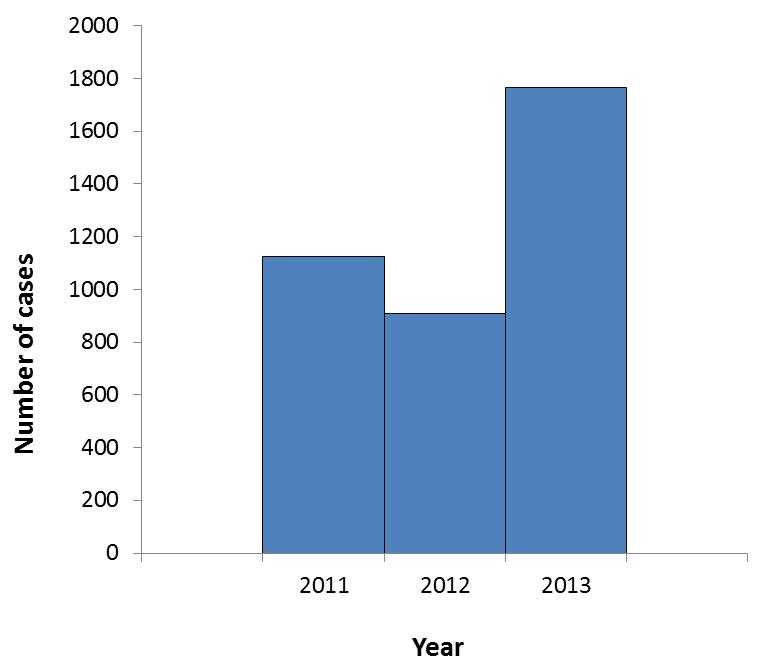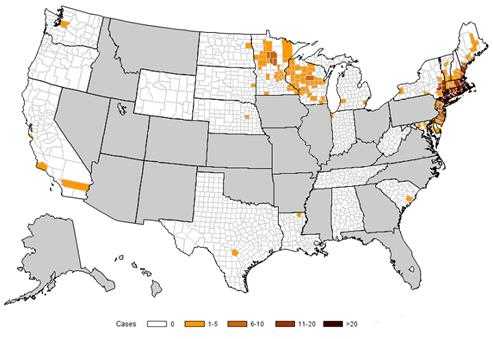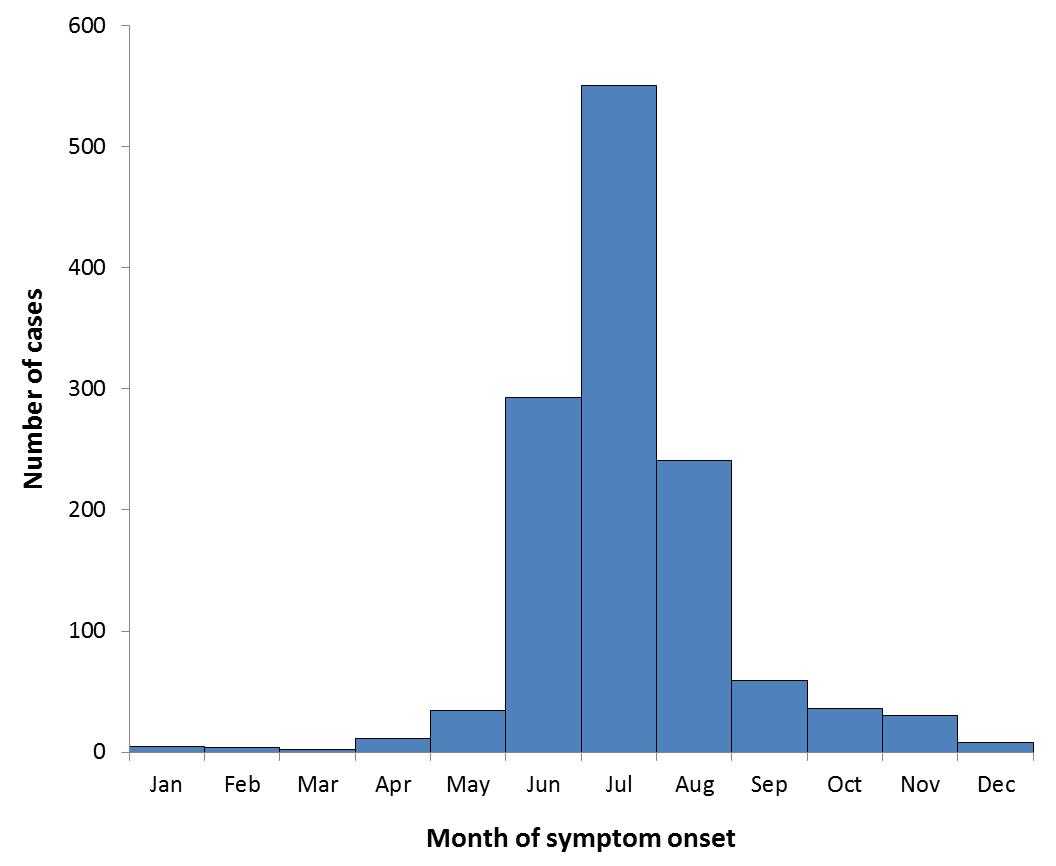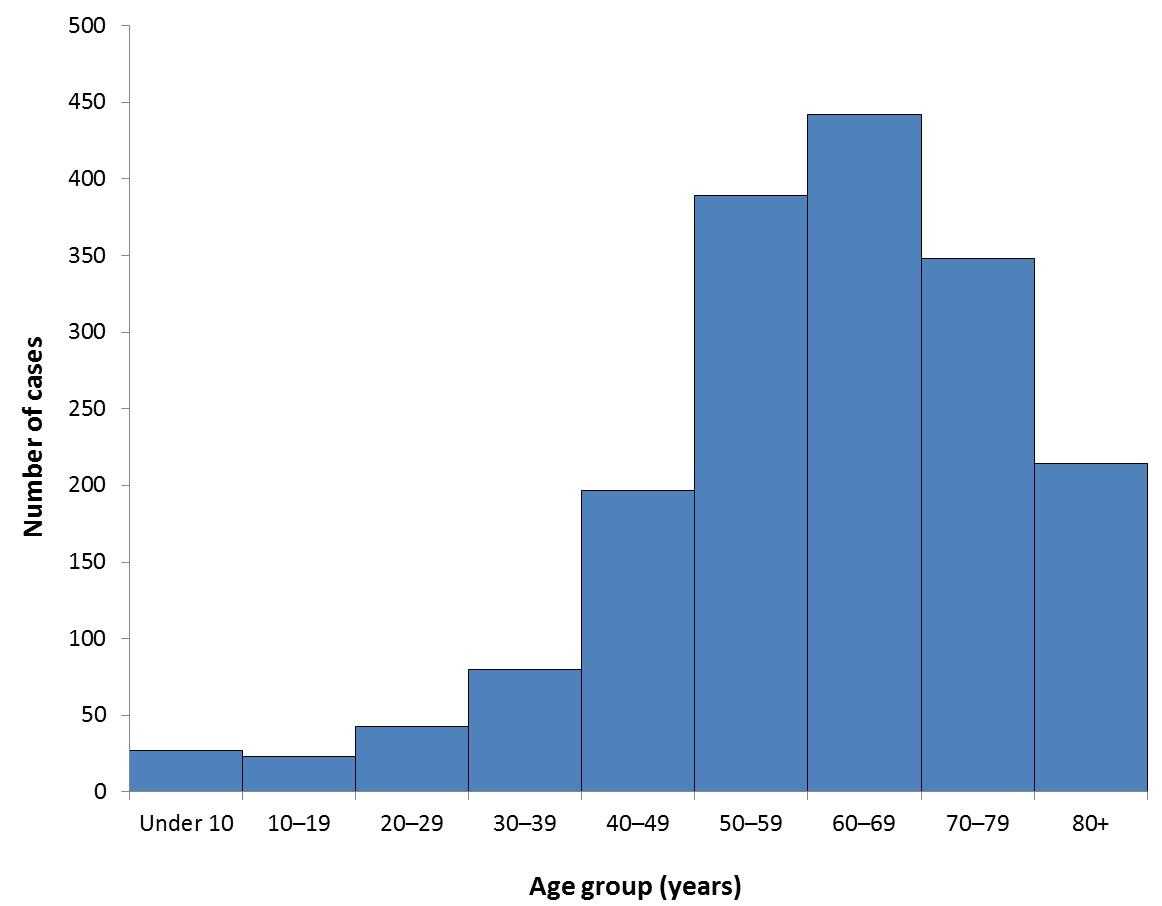2013 Data Archive
Note: This page contains data current as of September 17, 2014. Additional data, updates, or corrections received after that date are not reflected in this summary. For the most up-to-date summary, visit Data & Statistics landing page.
BabesiosisIn 2013, 27 states conducted surveillance for babesiosis: Alabama, California, Connecticut, Delaware, Indiana, Louisiana, Maine, Maryland, Massachusetts, Michigan, Minnesota, Nebraska, New Hampshire, New Jersey, New York, North Dakota, Oregon, Rhode Island, South Carolina, South Dakota, Tennessee, Texas, Vermont, Washington, West Virginia, Wisconsin, and Wyoming.
For 2013, among the 27 states in which babesiosis was a reportable condition, CDC was notified of 1,762 cases of babesiosis.
Babesiosis became a nationally notifiable condition in January 2011, which means that CDC is notified of the number of cases that meet the case definition from those health departments where babesiosis is reportable.

FIGURE 1. Number* of reported cases of babesiosis, by year†
* Numbers presented here may differ slightly from those in the MMWR Annual Summary of Notifiable Diseases because of differences in the timeline for closing the annual surveillance dataset.
† Year as reported by the health department.
Yearly fluctuations in the number of reported cases are expected due to various factors, such as changes in the number of states reporting cases or differences in disease transmission because of tick density (Figure 1). Over time, with more years of surveillance, an overall trend may become clearer.
Geography
In 2013, the 1,762 cases were reported in residents of 22 of the 27 states in which babesiosis was a reportable condition (Figure 2). The other 5 states did not report any cases.
Most (95%) of the cases were reported by 7 states: Connecticut, Massachusetts, Minnesota, New Jersey, New York, Rhode Island, and Wisconsin. Tickborne transmission of Babesia parasites is well established in these states.

FIGURE 2. Number of reported cases of babesiosis, by county of residence* — 27 states,† 2013
* N = 1,750; county of residence was unknown for 12 of the 1,762 patients. Cases are mapped to the patients’ county of residence, which was not necessarily where they became infected.
† For 2013, 22 of the 27 states that conducted surveillance for babesiosis reported at least 1 case: California, Connecticut, Delaware, Indiana, Louisiana, Maine, Maryland, Massachusetts, Michigan, Minnesota, Nebraska, New Hampshire, New Jersey, New York, North Dakota, Rhode Island, South Carolina, South Dakota, Texas, Vermont, Washington, and Wisconsin. Five (5) states reported 0 cases: Alabama, Oregon, Tennessee, West Virginia, and Wyoming. In 2013, babesiosis was not a reportable disease in the gray states, and health departments in those states did not notify CDC of cases.
Seasonality
Although cases of babesiosis can occur during any month, the majority of people reported getting sick during the spring or summer months. Among the 1,276 patients for whom data were available, 1,088 (85%) had symptom onset dates during June–August (Figure 3).

FIGURE 3. Number of reported cases of babesiosis, by month of symptom onset* — 2013
* N = 1,276 with available information.
Patient Characteristics
For 2013, the median age of the patients was 62 years, with a range from less than 1 year to 103 years (Figure 4); 65% were male, 32% were female, and the sex was unknown for 3%.
For the 1,134 patients with information available, 494 (44%) were reported to have been hospitalized for at least 1 day. The median hospital stay was 4 days (range: 1 – 26 days). Signs and symptoms were not reported for every patient. When information was available, fever was the most frequently reported sign or symptom (83%; n = 1,054/1,276 patients), followed by thrombocytopenia (69%; n = 539/779) and anemia (64%; n = 479/752).

FIGURE 4. Number of reported cases of babesiosis, by age group* — 2013
* N = 1,759 with available information.
Routes of Transmission
Of the 597 patients for whom data were available, 270 (45%) recalled having a tick bite in the 8 weeks before symptom onset. Because the ticks that spread Babesia parasites are very small, many infected people don’t remember being bitten.
Babesiosis is usually spread by ticks, but people can also get infected via blood transfusion or congenitally (from mother to baby during pregnancy or delivery). For 2013, 14 cases of babesiosis in blood recipients were classified by the reporting state as transfusion associated.
Surveillance and Reporting
CDC collects and disseminates U.S. babesiosis surveillance data. Surveillance is the ongoing collection and analysis of data and the timely dissemination of information so that action can be taken. State and territorial health departments notify CDC of cases of nationally notifiable conditions. Health care providers, laboratories, and the general public should contact their state health department for information about babesiosis reporting. For additional information visit babesiosis surveillance and case reporting.
- Page last reviewed: January 13, 2015
- Page last updated: January 13, 2015
- Content source:


 ShareCompartir
ShareCompartir